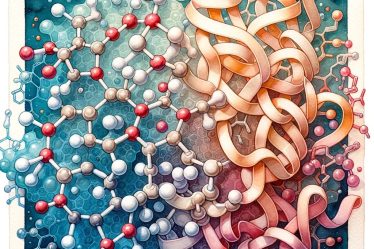
Welcome to this comprehensive guide on Acid-Base Titration, a cornerstone in analytical chemistry. Whether you’re a student, a teacher, or simply curious about the subject, this guide aims to equip you with a detailed understanding of acid-base titration principles, techniques, and applications. If you’re looking for personalized guidance, consider finding a chemistry tutor to deepen your understanding of this topic.
Discover your ideal chemistry tutor at meet’n’learn and skyrocket your understanding to new heights!
Introduction to Navigating the Complexities of Acid-Base Titration
Why is acid-base titration so crucial? It’s a quantitative analytical method that allows us to determine the concentration of an acid or a base in a solution. This knowledge is not just academic; it has practical applications in various industries, from pharmaceuticals to environmental science.
Here’s a glimpse of what you’ll learn:
- Basics of Acid-Base Titration
- Technical Details and Chemical Reactions in Acid-Base Titration
- Practical Guidelines for Conducting Acid-Base Titration
- Applications and Uses of Acid-Base Titration
- Educational Importance of Understanding Acid-Base Titration
Explore Acids, Bases, pH, and learn to Calculate Solution Concentrations.
Unveiling the Basics of Acid-Base Titration
Let’s dive right into the heart of the matter: Acid-Base Titration. This analytical technique stands as a pillar in the world of chemistry. But what exactly is it? An acid-base titration is a quantitative method that helps us determine the concentration of an unknown acid or base solution by reacting it with a known concentration.
Want to expand your chemistry horizons? Our World of Chemistry offers a plethora of free educational blogs.
Now, you might wonder why this is important. The answer lies in its versatility. An acid-base titration is not just a topic in textbooks; it’s a practical tool used in laboratories around the globe. Whether conducting research, working in a pharmaceutical company, or testing water quality, this method provides accurate and reliable results.
At its core, acid-base titration involves two key components: the titrant and the analyte. The titrant is the solution of known concentration, while the analyte is the solution whose concentration you want to determine. The process is complete when the amount of titrant equals the amount of analyte, known as the equivalence point.
How do we know when we’ve reached this equivalence point? That’s where indicators come into play. These are substances that change color at or near the equivalence point, signaling that the titration is complete.
Understanding the basics of acid-base titration sets the foundation for mastering more advanced techniques and applications, which we will explore in the coming sections.
Discover how Hydrogen Bonds and Covalent Bonds are formed, and learn to Differentiate Them from Ionic Bonds.
The Science Behind Acid-Base Titration
Alright, you’ve got a taste of what acid-base titration is all about. Now, let’s dig deeper into the science that makes it tick. This isn’t just textbook stuff; understanding these principles can make you a pro in the lab.
What is Viscosity and How to Calculate It?
Key Concepts and Terminology
Before we dive in, let’s get some terminology out of the way. Trust me, these terms will pop up a lot:
- Neutralization: This is the heart of the titration process. It’s the reaction where an acid and a base come together to form water and a salt.
- Endpoint: This is your finish line. It’s the point where the indicator changes color, telling you that the titration is complete.
- Standard Solution: This is your known variable, the solution with a concentration you’re sure of. You’ll use it as your titrant.
- Buffer: A solution that resists changes in pH. In some titrations, you’ll use a buffer to maintain a stable pH environment.
What are Hydroxides?
Chemical Reactions and Formulas
Let’s talk chemistry. The general equation for a neutralization reaction in acid-base titration is:
HA + BOH → BA + H2O
This equation tells you that an acid (HA) reacts with a base (BOH) to give you salt (BA) and water (H2O). Simple, right? But remember, not all acids and bases are strong; some are weak, and that can affect the titration process.
How to calculate Molar Mass and Mass Fraction?
Strong vs. Weak Acids and Bases
Strong acids and bases fully dissociate in water, but weak ones only partially dissociate. Why does this matter? Because it affects how quickly the pH changes during the titration, which can influence your choice of the indicator.
What are Functional Groups in organic chemistry?
How-to Guide for Calculations
Now, let’s get to the math part. You’ll often use this formula:
C1V1 = C2V2
Here, C1 and C2 are the concentrations of the solutions, and V1 and V2 are their respective volumes. This equation is your best friend when you want to find an unknown concentration or volume.
Ready to unravel The Greatest Discoveries in Biology?
Titration Curves
Ever heard of a titration curve? It’s a graph that plots the pH of the solution as a function of the volume of the added titrant. By studying the curve, you can accurately determine the equivalence point, even without an indicator.
So, there you have it. You’re now well-versed in the science behind acid-base titration. From key terms to chemical reactions and calculations, you’ve got the knowledge you need to understand and excel in any titration experiment you undertake.
Ethanol and Alcohols in Chemistry explained.
Mastering the Technique of Acid-Base Titration: A Practical Guide
Alright, you’ve got the theory down, so let’s roll up our sleeves and get into the practical side of acid-base titration. This is where you’ll learn how to apply that theoretical knowledge in a real-world setting.
Check out 8 Exciting Science Experiments for Kids.
Safety Measures
First things first, safety is paramount. Always wear your lab coat, gloves, and safety goggles. Remember, you’re handling acids and bases, which can be corrosive.
Equipment Needed
You’ll need a few essential pieces of equipment:
- Burette: For accurate measurement and dispensing of the titrant.
- Beaker: To hold the analyte solution.
- Indicator: To signal the endpoint of the titration.
Step-by-Step Procedure
Now, let’s walk through the titration process:
- Preparation: Fill the burette with the standard solution and note the initial volume.
- Measurement: Pour a known volume of the analyte into a beaker.
- Indicator Addition: Add a few drops of the chosen indicator to the analyte.
- Titration: Slowly add the titrant from the burette to the analyte while constantly stirring.
- Endpoint Detection: Stop adding the titrant when the indicator changes color. This is your endpoint.
There you have it! You’ve just learned how to perform an acid-base titration. It’s a straightforward process, but each step is crucial for obtaining accurate and reliable results.
Introduction to the Periodic Table and how to memorize it.
Putting Knowledge to Work: Applications and Uses of Acid-Base Titration
You’ve got the theory and practice down, but where does acid-base titration come into play in the real world? Let’s quickly dive into its diverse applications.
- Medical and Pharmaceutical Industry: Used for formulating medicines and ensuring correct concentrations.
- Environmental Science: Measures acidity in rainwater and alkalinity in rivers.
- Food and Beverage Industry: Ensures consistent taste by measuring acidity levels.
- Chemical Manufacturing: Quality control to meet safety and effectiveness standards.
- Academic and Research Labs: A foundational technique for chemistry students and researchers.
- Everyday Life: Used in water treatment and agriculture for soil testing.
In summary, acid-base titration is a versatile technique with applications that extend far beyond the classroom, from healthcare to environmental science and even your daily life.
The basic of Polymers.
The Academic Angle: Why Learning Acid-Base Titration Matters
By now, you’ve got a solid grasp of what acid-base titration is and where to apply it. But let’s talk about why this subject is a staple in educational curricula and how it can benefit you academically.
- Building a Strong Foundation in Chemistry: Understanding acid-base titration is like learning the ABCs of chemistry. It prepares you for more advanced studies in various scientific fields.
- Developing Analytical Skills: Performing a titration teaches you how to observe, measure, and interpret data, skills that are invaluable in both academic and professional settings.
- Hands-on Laboratory Experience: Acid-base titration provides an opportunity to work in a lab setting, use scientific instruments, and follow safety protocols. This experience is a confidence builder.
- Preparing for Advanced Studies and Careers: Proficiency in acid-base titration can be a stepping stone to more advanced studies and a wide range of careers in science and technology.
Discover the fundamentals of Electrochemistry and Redox Reactions.
Role of Tutors in Mastering Acid-Base Titration
While textbooks and lectures offer a wealth of information, a tutor can provide personalized guidance that truly elevates your understanding of acid-base titration. A skilled tutor can tailor explanations to your learning style, answer your specific questions, and even provide extra practice problems. This one-on-one interaction can make a significant difference in your mastery of the subject, turning challenges into opportunities for growth.
In summary, learning acid-base titration is not just an academic requirement; it’s a skill set that can benefit you in multiple ways, from enhancing your analytical abilities to opening doors to various career paths.
Looking for a chemistry tutor? Enter “chemistry tutor Glasgow” or “chemistry teacher Sheffield” on your preferred tutoring platform, such as meet’n’learn to find a teacher who can meet your specific needs.
If you thrive in group learning environments, search “chemistry classes London” or “chemistry lessons Manchester” online to discover local schools offering chemistry lessons.
Final Words on Acid-Base Titration
We’ve journeyed through the what, why, and how of acid-base titration, exploring its scientific principles, practical steps, applications, and educational significance. But the learning doesn’t have to stop here.
Whether you’re a student, a teacher, or just someone curious about chemistry, acid-base titration offers a wealth of knowledge that can be applied in various fields. It’s a subject that combines theoretical understanding with practical skills, making it a valuable asset in your educational journey.
Don’t just take my word for it; dive deeper into this fascinating subject. Experiment in the lab, consult additional resources, and seek personalized guidance from a tutor. The world of acid-base titration is vast and filled with opportunities for further exploration and mastery.
Thank you for taking the time to read this guide. I hope it serves as a helpful starting point and encourages you to explore the subject further.
Struggling with biology topics? Explore our extensive collection of biology educational blog posts designed to simplify complex concepts for you. Whether it’s photosynthesis, the intricacies of green algae, understanding bacteria and viruses, or delving into the fascinating world of genetics and cells, our resources have got you covered. Expand your knowledge and enhance your learning journey with us today.
Frequently Asked Questions About Acid-Base Titration
1. What is the main purpose of acid-base titration?
The primary goal is to determine the concentration of an unknown acid or base. This is achieved by adding a solution of known concentration until the reaction between the two is complete.
2. Is acid-base titration only applicable in chemistry labs?
No, it has many applications, from the medical field to environmental science and even in everyday life, like water treatment plants.
3. What are the key components needed for acid-base titration?
You’ll need a burette, a pipette, a conical flask, and both the acid and base solutions, one of which must have a known concentration.
4. Why is a pH indicator used in acid-base titration?
A pH indicator signals the end point of the titration, which is when the reaction is complete, and the amounts of acid and base are stoichiometrically equal.
5. How can a tutor help me master acid-base titration?
A tutor can provide personalized guidance, tailored explanations, and extra practice problems to help you understand the subject more deeply.
6. Is acid-base titration difficult to learn?
While it may seem complex at first, with proper guidance and practice, it becomes a straightforward and valuable skill in chemistry.
7. Can acid-base titration be dangerous?
As with any chemical experiment, there are safety risks, but following proper lab protocols minimizes these risks.
8. What are some real-world applications of acid-base titration?
It’s used in various industries like pharmaceuticals, food and beverage quality control, and environmental testing.
Discover your ideal chemistry tutor at meet’n’learn and skyrocket your understanding to new heights!


